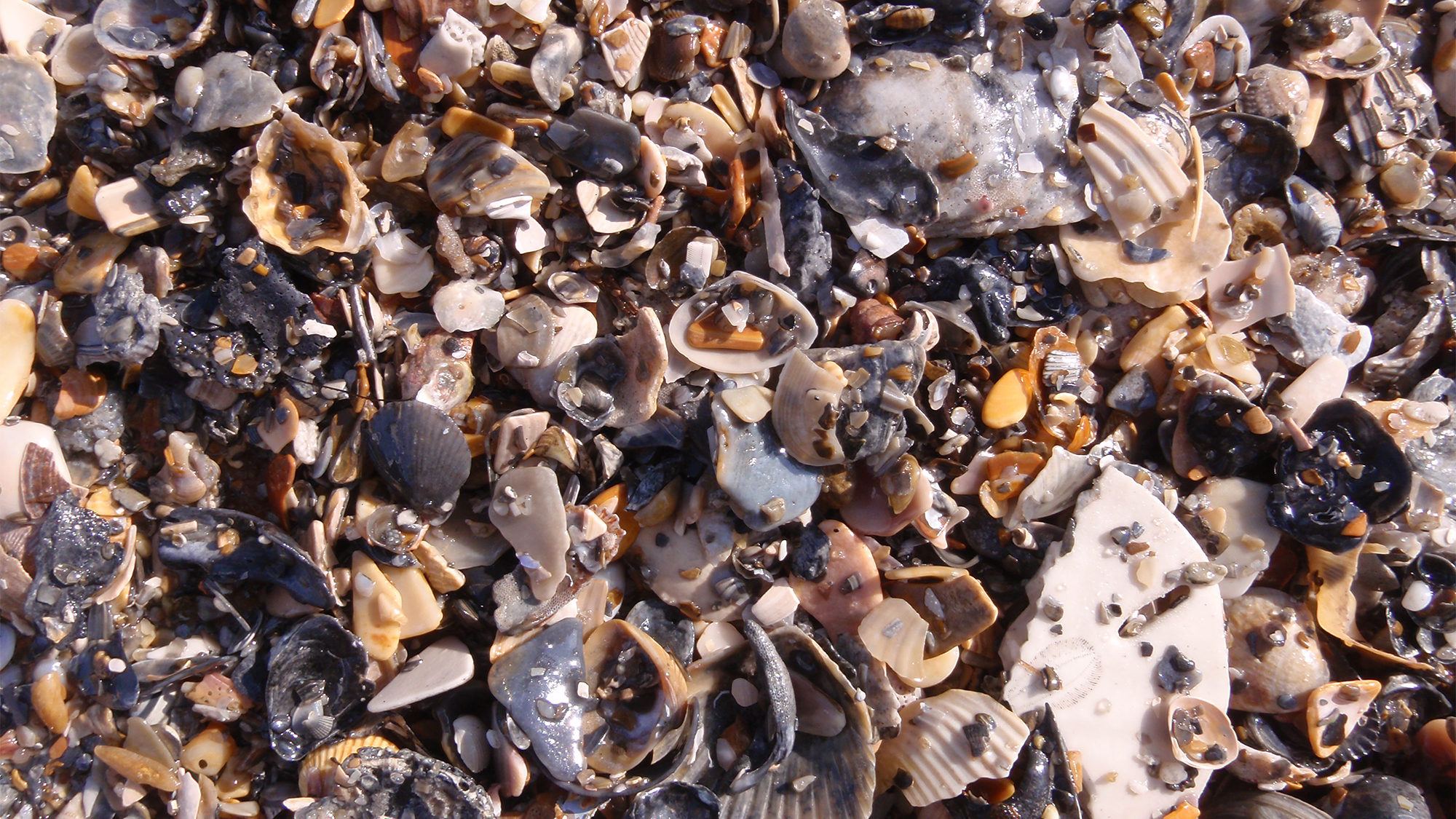

As we plunge into Earth’s sixth stage of mass extinction (that we are aware of), biologists looking to conserve and restore ecosystems that have been stripped of plant and animal life can face a pretty daunting task. However, help is on the way in the form of some of the ocean’s worms, mollusks, and crabs. A study published July 11 in the journal PeerJ, finds that fossils from these groups are actually preserved in the fossil record in proportion to their diversity, making for a solid source of information about past ecosystems.
[Related: Fossil trove in Wales is a 462-million-year-old world of wee sea creatures.]
Reliable evidence of what they looked like before humans arrived can be tough to come by, especially in coastal ecosystems. These spots were ravaged by overharvesting and pollution centuries before humans began to monitor their health. This is where the lowly mollusk can help.
“This has been a topic in paleontology for decades. People have looked at modern ecosystems in a variety of habitats to see how well the fossil record reflects what’s living there,” study co-author and chair of invertebrate paleontology at the Florida Museum of Natural History Michal Kowalewski said in a statement. “But most previous studies looked at how species are recorded within a specific group. We wanted to know how groups are recorded within the entire system.”
Ancient organisms that were primarily made of soft tissues are less likely to be in the fossil record than those with harder body parts like bones and shells. These tougher parts also come in varying degrees of thickness and strength, primarily depending on what organism they belonged to and what stage of development they were in.
Researchers have looked to mollusks as a proxy for the overall health of ecosystems since they are common in the fossil record and can represent the health of an ecosystem. Their sturdy shells litter the seafloor and show patterns of species diversity and distribution that can provide a window into the past states of the ocean before humans entered the picture.
According to the team, mollusks past and present can be used to broadly infer the health of an ecosystem, in part due to their status as the backbone of an aquatic ecosystem, the way that vital signs are used to signal a patient’s health. Scientists can then perform a more robust check-up and find patterns of population declines, shifting habitat ranges, and if invasive species were introduced when comparing the remains of long dead species with living ones.
In 2021, scientists in Europe demonstrated that the native molluscan biodiversity of the eastern Mediterranean Sea has almost entirely collapsed due to global warming, which suggests that other organisms may be struggling too.
“Most of what we know, in terms of biases in the fossil record, is based on mollusks,” co-author and University of Nevada, Las Vegas marine conservation paleobiologist Carrie Tyler said in a statement. “We designed our study to determine whether those biases are consistent when you include many types of organisms, not just mollusks. What happens when you have worms and sea urchins and all other groups in a marine ecosystem?”
[Related from PopSci+: The ghosts of the dinosaurs we may never discover.]
In this study, the team’s first step was to find a suitable marine ecosystem to compare living and fossil organisms to examine the discrepancies between past and present communities. They used a relatively unchanged environment off the coast of North Carolina that had the skeletal remains of dead animals and living animals. While there, the team collected samples from 52 locations that include a wide spectrum of onshore and offshore habitats that support specialized communities of organisms.
Over the course of two years, the team counted over 60,000 living and dead specimens representing hundreds of different marine invertebrates. The thick shells of mollusks were overly represented in the fossil record, compared with other softer groups. However, the fragments of dead sand dollars, corals, tube-forming worms, and other non-mollusks were more broadly represented at the same level of both abundance and diversity as their living counterparts.
Brachiopods and sea stars that had less current-day diversity in the region were not seen in fossil record, partially due to their low numbers. Past and present habitats were also dominated by different species. For example, a type of hermit crab that is common today didn’t appear in the fossil record, but the overall number of species in different groups remained consistent.
According to the team, most marine ecosystems do not have a complete inventory of the species that live there, and the existing count is shrinking as some species decline and others go extinct. If these other marine environments are archived like the one in North Carolina in this study, researchers will have a baseline to evaluate the long term viability in those communities.
“We can use the whole fossil assemblage as a picture into the past for a particular place despite differences in preservation among animals,” Tyler said. “By comparing it to the living community, we can see how much an ecosystem has changed and decide on the best conservation strategies based on those changes.”
